One of my favorite things about the tiny house movement is there is no one right way to design/build your space. Simply put, what works best for you is what is best for you. Each space is customized by your specific priorities and lifestyle needs. Based on these factors, you decide what square footage is right for you and what will help bring your space to life. Though your available storage space will be limited, the good news is your appliance possibilities are immense.
Before you start on your appliance selection odyssey, you need to identify your power goals.
Consider the following questions:
- Do you want to go fully off-grid? Accomplishing this can be cost-prohibitive for some but for others, completely worth it in the long run.
- Would you prefer to have an easy-peasy plug and play, fully on-grid house? Higher power needs can limit your parking options. For instance, 50amp service is not often available in backyards but can almost always be found at RV parks.
- Do you want to limit your environmental impact but are on a more limited budget? A hybrid of on and off-grid power sources and appliance might work well for you.
Based on your responses, you can now proceed with your appliance selection. Your final appliance list will determine how much power your tiny home will need. From here, you can curate your electrical and/or solar system to meet these needs. Note: a 30amp and 50amp tiny house have very different electrical capacities, and correspondingly, the number of appliances you can run off your available amperage will vary greatly.
Now, the fun part! Time to choose your appliances. Here’s a list of what’s out there and what some tiny dwellers are using. By no means is does this cover all the options; they are indeed almost endless. Happy researching!
Refrigerators
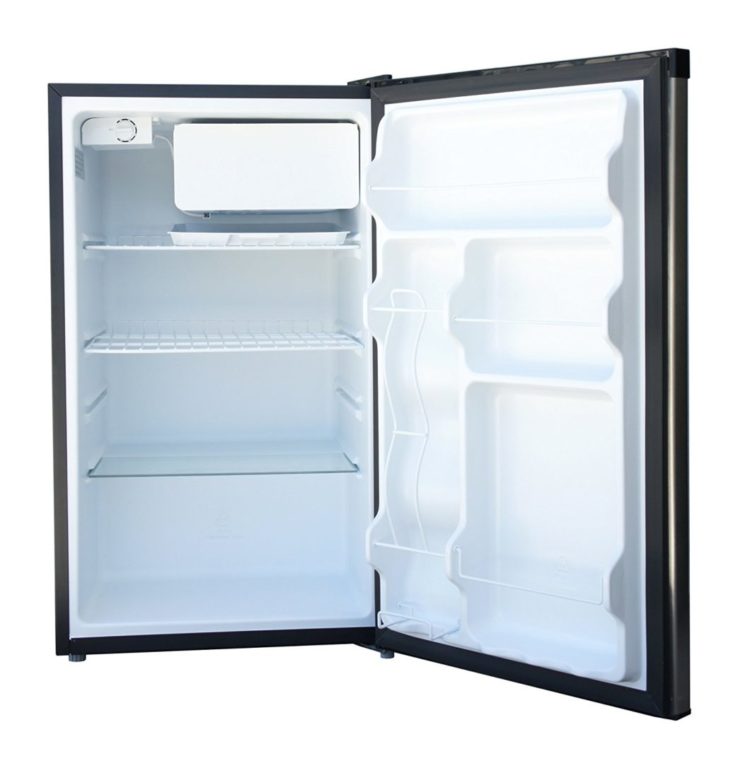
In our 130 square foot tiny house, we have a 4.4 cubic ft. compact fridge. We wanted to keep the kitchen space as open as possible, so we opted for fridge size that could fit under the counter.
Pros:
- Fits perfectly under our counter.
- It was free.
- Energy Star rated– high energy efficiency.
- It can hold enough fresh food for about 1.5-2 weeks. The size limitations have helped us waste less food and eat fresher.
Cons:
- Putting away groceries or leftovers can feel like a game of Tetris.
- Freezer space is incredibly limited. It can only fit a quart of ice cream (pro: it can’t fit a gallon of ice cream— I’m trying to stay in shape!)
- Freezer needs to be defrosted regularly. Frost build up is real, really bad…
Too small for you? Good news, you can design your tiny space around your food storage needs. Tiny houser Nina Zamudio has a full-size fridge, and she wouldn’t have it any other way. She is a gourmet vegan home chef (@atinyhousevegan), which requires tons of food prep and storage space. Based on her design, Nina’s large fridge fits perfectly and doesn’t feel out of space, but she knew from the start this was a must-have appliance.
There are countless tiny homes with apartment size fridges, a happy middle ground between mini and full-size fridge. Ariel McGlothin uses a 7.4 cubic feet apartment fridge in her fully off-grid tiny house named, Fy Nyth. “Which I am very happy with after more than three years of use and would buy again. Plenty of space, relatively low power use, and overall just a good fit for my tiny house life.”
Ranges and Cooktops
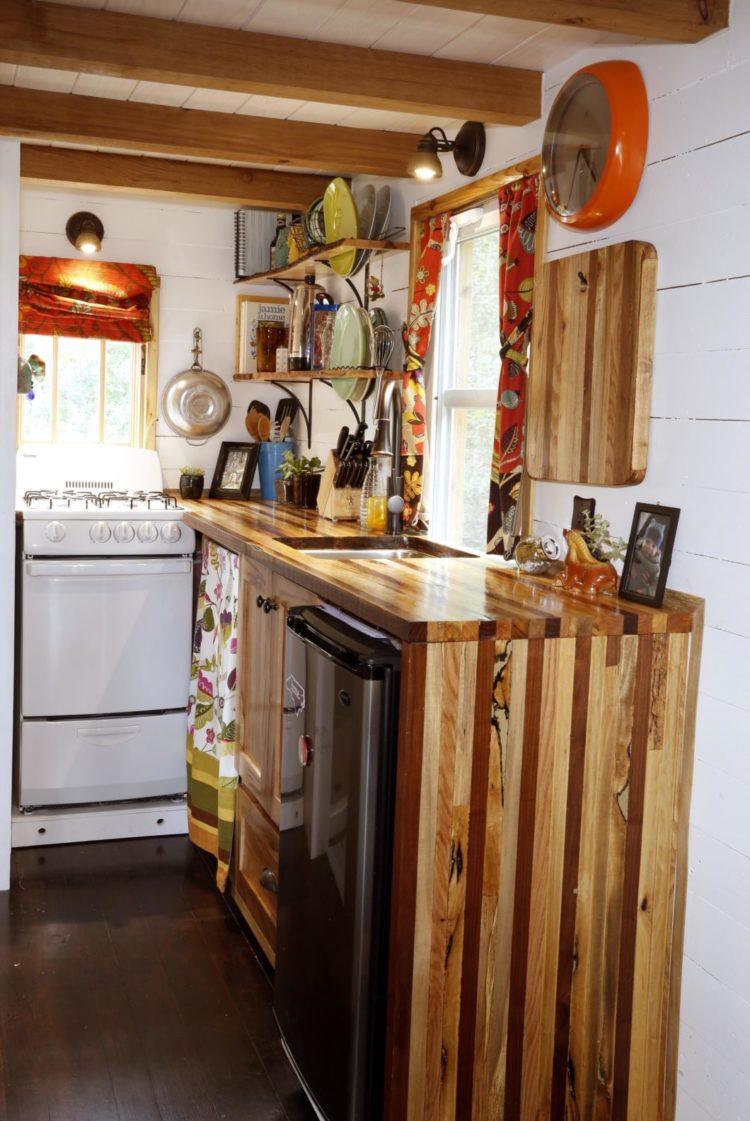
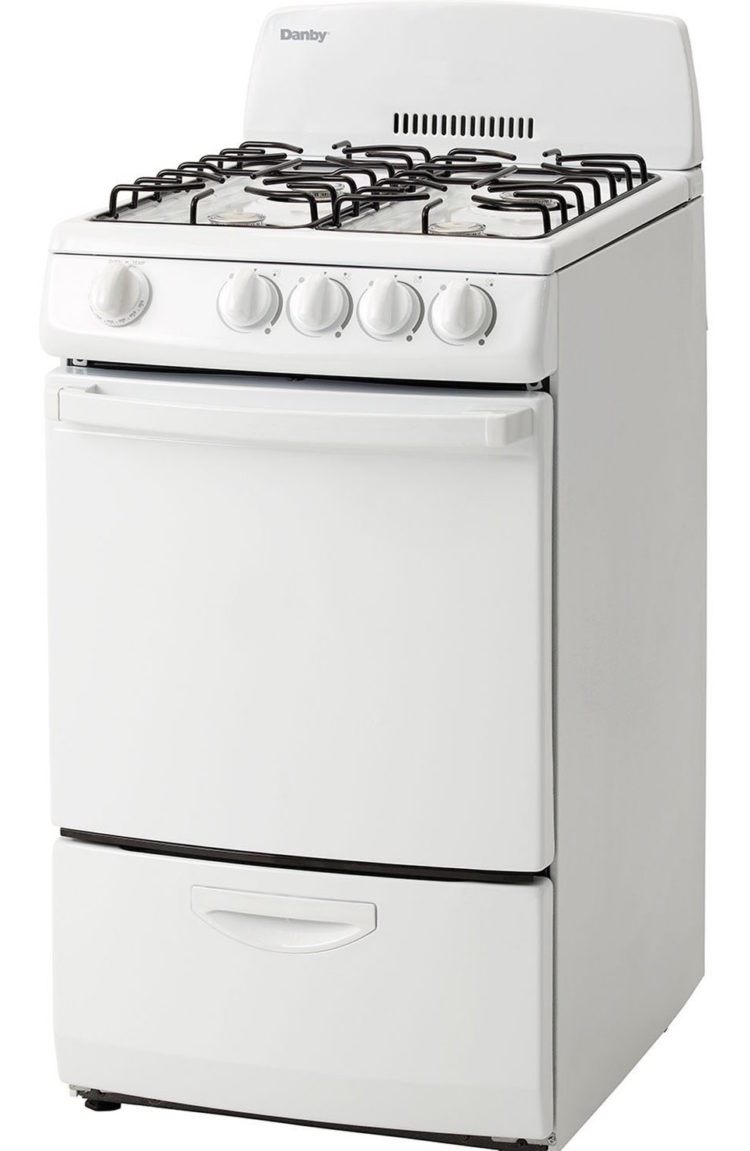 I love to cook, so for me, it was essential to have a range (combined stovetop and oven). Ultimately we decided on an apartment sized gas range; it runs on propane. I have cooked countless scrumptious meals with it, including a small Thanksgiving feast. And to my surprise, I don’t miss a microwave at all. I do all my cooking and reheating with my range.
I love to cook, so for me, it was essential to have a range (combined stovetop and oven). Ultimately we decided on an apartment sized gas range; it runs on propane. I have cooked countless scrumptious meals with it, including a small Thanksgiving feast. And to my surprise, I don’t miss a microwave at all. I do all my cooking and reheating with my range.
Pros:
- Just-right size for our kitchen at 20″ wide.
- It’s adorable.
- Features 4 burners and mid-size oven space. Well-suited for our frequent home-cooking needs.
- It has a broiler drawer! Particularly great for toast; eliminating any desire on behalf for a toaster.
Cons:
- When not connected to power, we must light the stovetop with a long-reach lighter, and we cannot use the oven or broiler drawer. Note: there are cordless gas ranges on the market that use battery-powered igniters to heat the burners and oven without the need for electricity.
- From time to time, we struggled with the oven regulator. Sometimes we have to turn down the propane to reduce the flame volume. This can also reduce the stovetop flame, which affects my ability to use both at the same time.
We wish we had room for a range hood for better ventilation. Instead, we make do with a clip on fan blowing out the back window and our ventilation fan in the nearby bathroom. Ariel has a similar range with the coveted hood, particularly useful for adequately venting propane that can subtly linger in the air.
Many tiny dwellers opt for space-efficient cooktops insteat of a range. These are available in single to four burner sizes. You can choose from electric, propane or induction.

Avalon Bay Square Induction Cooktop is compact and portable, allowing it to be stored in a drawer or on a shelf, so you maintain open, uncluttered countertops when not in use. The induction system accelerates the cooking process, and the hot plate is made from eco-friendly ceramic. It uniformly distributes heat in all directions, evenly and thoroughly cooking your dish.
A significant benefit of induction cookers of all kinds is the lack of excess heat. The traditional gas and electric counterparts heat up the air around the pan, losing up to half their heat to the surrounding environment. The result a cooler kitchen space, which is a very valuable quality in a small space. My gas range definitely heats up our tiny house. Great in the winter but not so much in the hot summer months.
For those looking for an off-grid cooking experience, sans propane, consider solar cookers. The Solavore Sport Solar Oven is one of the best on the market. It allows for larger cooking capacity than most other solar cookers. As Living Survival shows in the video below, it can be used more like a traditional oven, allowing you to bake and slow cook in it. Despite what you might think, you can use this solar oven year-round. The only requirement is sun.
Heating and Cooling
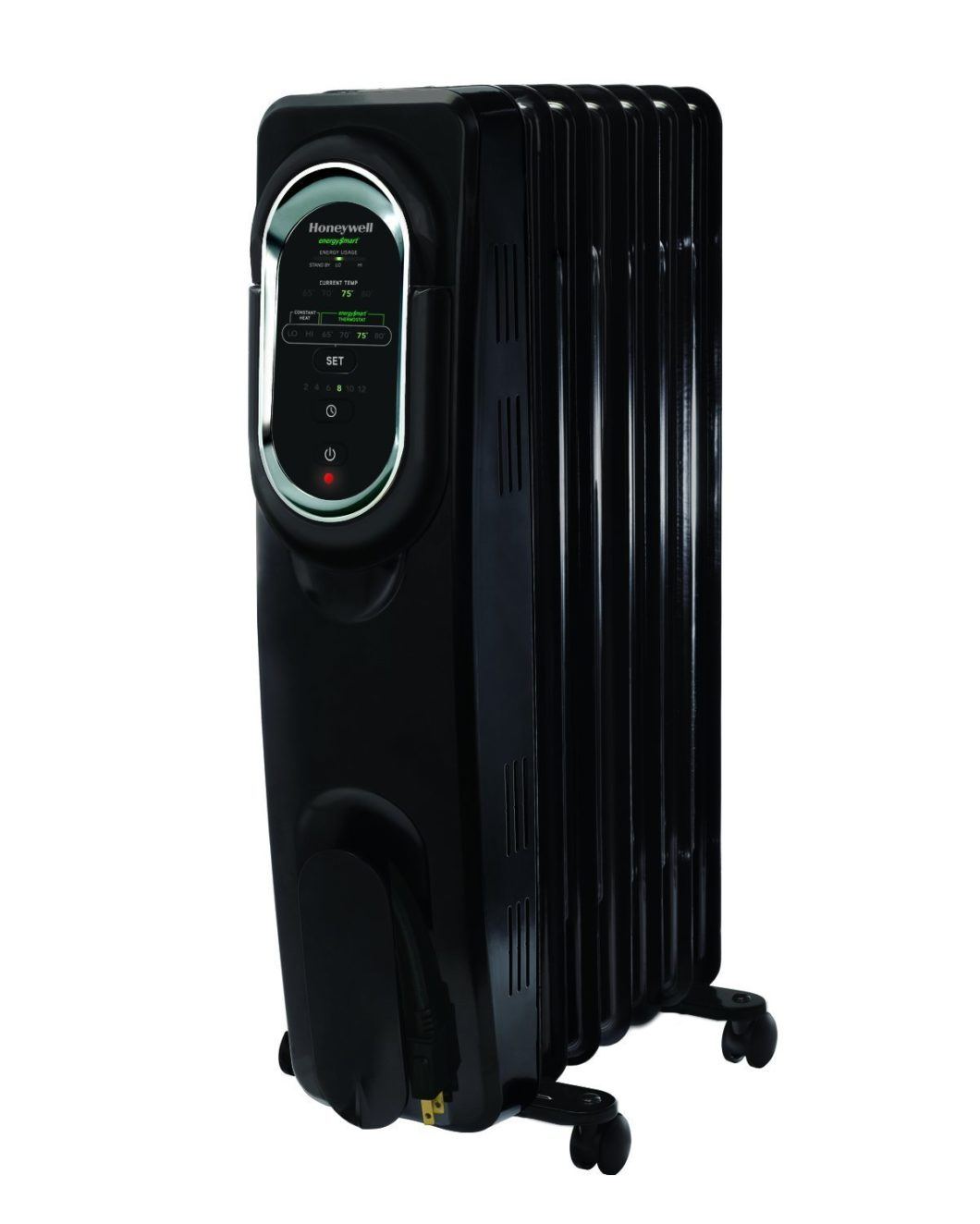 It doesn’t take much to heat our extra tiny, tiny home, especially with our closed-cell spray foam. When the temperatures start to drop, we turn-on our electric oil-filled radiator. On one of our early road trips to Red Rock State Park in New Mexico, we rolled up in the evening and checked the forecast. The predicted low, a mere 7 F. We cranked up the heater and cooked dinner. When we went to bed, we forgot to turn it down. We ended up waking in the middle of the night sweating, and had open our windows wide to cool down.
It doesn’t take much to heat our extra tiny, tiny home, especially with our closed-cell spray foam. When the temperatures start to drop, we turn-on our electric oil-filled radiator. On one of our early road trips to Red Rock State Park in New Mexico, we rolled up in the evening and checked the forecast. The predicted low, a mere 7 F. We cranked up the heater and cooked dinner. When we went to bed, we forgot to turn it down. We ended up waking in the middle of the night sweating, and had open our windows wide to cool down.
Pros:
- Even on the coldest nights, our lowest so far -10 F, it heats our tiny space with ease.
- Energy efficient.
- Slim profile.
- Adjustable thermostat.
- Almost silent.
- Portable; it easily rolls around.
- Safety features like overheat protection.
Cons:
- It takes a solid hour to warm up a cool house (ours never drops below 50 F, with no heat).
- It only heats!
We would really like a mini split. With that, we could say replace three appliances with one. Mini splits heat, cool and dehumidify. So efficient! Currently, we use a small window unit for AC. In addition, too inefficient cooling, it blocks natural light from one of our windows, and it’s loud. Have you been in a tiny house with a mini split? They are whisper quiet. Andrew Odom explains the benefits of the ClimateRight unit in the below video.
 Another triple-threat option is the New Air Portable AC unit; it also cools, heats and dehumidifies spaces up to 425 square feet. It has low environmental impact; according to the manufacturer it uses R-410A refrigerant, which does not harm the ozone in any way. The New Air unit uses slightly fewer watts than the mini split but can drop down further when the energy boost feature is engaged.
Another triple-threat option is the New Air Portable AC unit; it also cools, heats and dehumidifies spaces up to 425 square feet. It has low environmental impact; according to the manufacturer it uses R-410A refrigerant, which does not harm the ozone in any way. The New Air unit uses slightly fewer watts than the mini split but can drop down further when the energy boost feature is engaged.
For those in need of supplement heat, numerous tiny homeowners swear by Envi Heaters. Talk about a slim profile, it’s only 2″ deep! It’s also whisper quiet, incredibly energy efficient and extremely low power consumption. The Lucky Linden tiny house in Utah, built by Meg Stephens is heated entirely by an Envi and radiant heat flooring. Can you spot the Envi in the picture below?
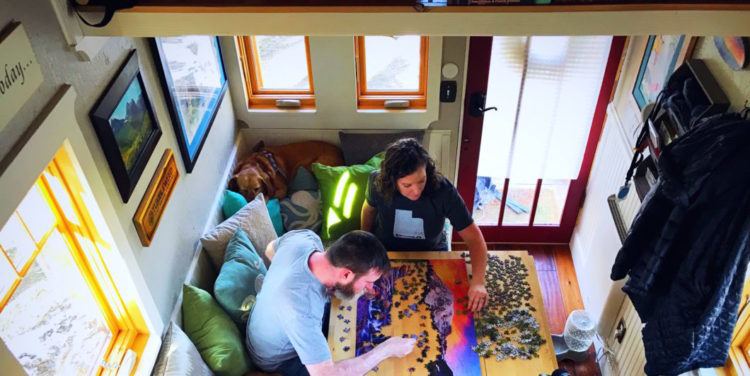
 To supplement the cooling in our tiny house, we have used the 15″ Terna Ceiling Fan by Kichler. I used the past tense because after about a year of travel the threading on the rod gave out. For more stationary tiny home I highly recommend this fan, especially for tiny homes with gable roofs. The tall, slim blades helped circulate air straight across our two lofts, which tend to get warmer than downstairs— heat rises, of course.
To supplement the cooling in our tiny house, we have used the 15″ Terna Ceiling Fan by Kichler. I used the past tense because after about a year of travel the threading on the rod gave out. For more stationary tiny home I highly recommend this fan, especially for tiny homes with gable roofs. The tall, slim blades helped circulate air straight across our two lofts, which tend to get warmer than downstairs— heat rises, of course.
For off-grid living, you can’t beat wood stove heating. The Kimberly gasifier wood burning stove is perhaps the holy grail of stoves for tiny spaces. It has a highly efficient, requiring a fraction of the wood that most stoves require. Additionally, it offers a cleaner burn, as compared to other stoves on the market.
Top features:
- Lightweight, only 56 lbs.
- Requires a mere 6 inches of clearance on sides and back of flue
- Produces just 3.2 grams/hour emissions
A couple other top tiny home favorites:
Laundry
For some, the thought of having to go the laundromat is appalling. Not for me. Though I recognize that not all laundromats are created equal. Most now offer free wifi, so you can multitask or even watch a movie while you wait. When we go to the laundromat, it takes no more than 1.5 hours to wash and dry all our clothes.
But for those you may need or desire a home option for their laundry, there are few on and off-grid options available.
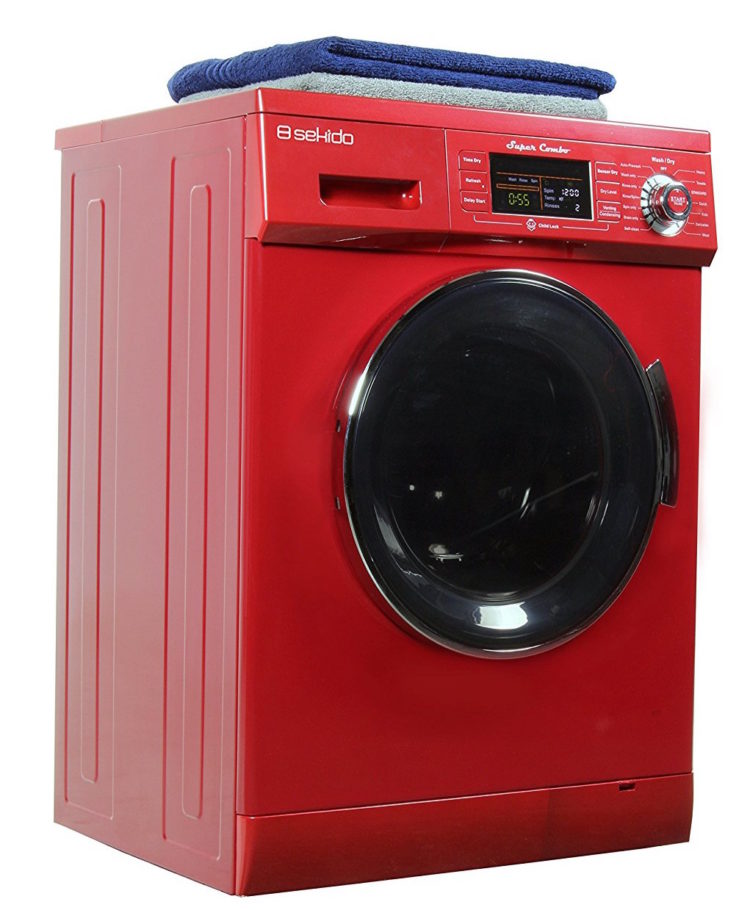
After hearing mixed reviews about the drying ability of compact combo washer/dryer units, the Marek and Kothney-Issa of the Fun-Size Home decided to go with a stackable washer/dryer combo, and asked their builder, Cornerstone Tiny Homes, to design their 24′ tiny house with this in mind.

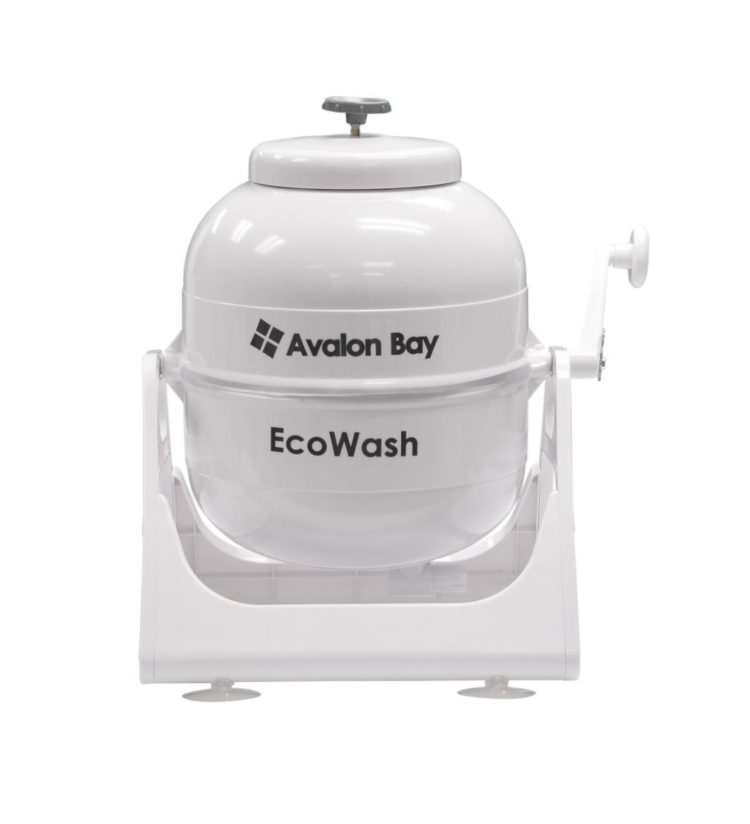
Looking for an off-grid washing option, try the Avalon Bay EcoWash Portable Washing Machine or EcoSpin Portable Clothes Washing Machine. Both units are hand operated. The EcoWash has a slightly higher weight capacity, with it you can wash five pounds of clothes in just two minutes! Sounds like a great option for tiny house families. By no means is this a scientific claim, but it sure seems like you could count washing clothes as part of your daily exercise routine.

 To dry clothes, a clothes line is your best off-grid option. Though a hybrid on/off-grid option: a hand-operated washer paired with a NewAir Portable Dryer. The dryer is high in wattage but is only 3.6 cubic feet and holds up to 13 lbs of clothes. Could be great for wintry climates or families; what do you think?
To dry clothes, a clothes line is your best off-grid option. Though a hybrid on/off-grid option: a hand-operated washer paired with a NewAir Portable Dryer. The dryer is high in wattage but is only 3.6 cubic feet and holds up to 13 lbs of clothes. Could be great for wintry climates or families; what do you think?
Whatever combination of appliances you decide is right for your lifestyle, you can design you tiny space and electrical needs around them. Key factors to consider: size, cost and power requirements.
-Alexis Stephens, Tiny House Blog Contributor
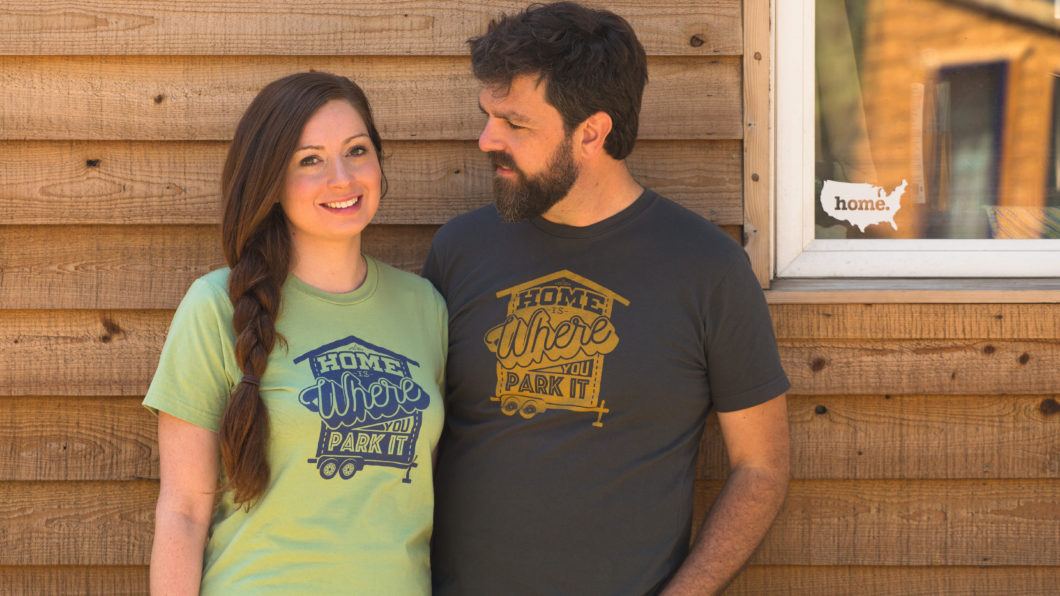 My partner, Christian and I are traveling tiny house dwellers. Together we’ve been on the road two years for our documentary and community outreach project, Tiny House Expedition. We live, breathe, dream the tiny home community every day. This is our life and our true passion project. We are very grateful to be able to experience this inspiring movement in such an intimate way and to be able to share our exploration with all of you.
My partner, Christian and I are traveling tiny house dwellers. Together we’ve been on the road two years for our documentary and community outreach project, Tiny House Expedition. We live, breathe, dream the tiny home community every day. This is our life and our true passion project. We are very grateful to be able to experience this inspiring movement in such an intimate way and to be able to share our exploration with all of you.


I have a 14.6 long by 6.6 wide thow . My kitchen is one big shelf that I cut to fit the back wall. mini ref , 2 mic , toaster oven, solar kit when not in use, hot plate, 2 pans , 2 drawer for soup starter , sound system ,four cd big cases 1K . But I have live in it for a year. Now I got my next THOW it is massive 28 feet long by 7.9 wide by 6.8 height on short side. I am just about to start build this one. This time I am going to use 2 by 3 studs. I have r-3 insulated board for the side follow by plywood on top that. This time I will use 16 inch on the center. instead of 12 on center. So plywood is easy My first big THOW and what not to do on the build. I am getting the stuff to go in it now for the kitchen and bathroom. I have a chest freezer small 3.3 cubit if I remember right. I have a waterpower plant system, wind turbo kit too.
I am building a micro-house, 8×8′ which will have a full kitchen and sofa/bed on one level! Another good choice for kitchen range is the Camp Chef Outdoor Stove with Oven. It’s got two pretty powerful 7500 btu burners and a good-sized oven! Costs around $200. And hint…the oven holds it’s temperature better if you put a small pizza stone in the bottom.